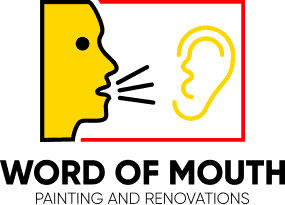Mastering Surface Preparation: Your Guide to a Perfect Paint Job
Picture this: a once-striking door jam, now marred by peeling and chipping paint. It’s an eyesore that draws attention for all the wrong reasons. A stark contrast to the image featured here. Sadly, this frustrating scenario is all too common and avoidable with one critical step – proper surface preparation. If you’ve ever wondered why some paint jobs remain vibrant and smooth for years while others start to degrade almost immediately, you’re in the right place. Welcome to the world of professional painting, where surface preparation reigns supreme. This guide dives deep into why meticulous surface preparation is the backbone of a flawless, enduring paint job. Read on to discover the secrets to preventing paint mishaps like the one you see in our featured image.
What is Surface Preparation?
Imagine trying to stick a sticker on a dusty table. It wouldn’t stick very well, right? The same goes for paint. Surface preparation is like cleaning that table before sticking your sticker. We clean the surface and make sure it’s smooth and ready for paint. This process includes cleaning, repairing any damage, and applying something called a primer.
Why is Surface Preparation Important?
Surface preparation is like baking a cake. If you don’t mix your ingredients well, your cake won’t turn out right. Just like a cake needs well-mixed ingredients, a good paint job needs well-prepared surfaces. If we don’t prepare the surface, the paint can peel off, just like the paint in our picture.
How to Do Surface Preparation?
A professional painter follows a few steps for surface preparation:
- Cleaning: The surface needs to be clean and dry. We remove any dust, dirt, or grease.
- Repairing: If there are any cracks or holes, we fill them in.
- Sanding: We make the surface smooth with a process called sanding.
- Priming: We apply a special type of paint called a primer. This helps the paint stick better to the surface.
What Happens If We Don’t Prepare the Surface Properly?
Imagine building a house on sand. It wouldn’t be very stable, would it? If we don’t prepare the surface properly before painting, the paint might start peeling or bubbling. It won’t look nice, and we might have to paint again much sooner.
If we want our paint jobs to look good and last long, we must prepare the surface properly. Think about our door jam picture. With good surface preparation, we can avoid such problems. Remember, every great paint job starts long before the brush touches the surface. Next time you plan a painting project, don’t forget about surface preparation!
Key Takeaways
- Thorough surface preparation is integral to achieving an impressive and lasting paint finish.
- Surface preparation involves a detailed process including cleaning, repairing, and priming the surface.
- Skipping or skimping on surface preparation can lead to premature paint failure.
- Professional painters have the expertise to execute surface preparation to perfection.
- Understanding the value of surface preparation can save you from frequent and costly repainting.
Frequently Asked Questions (FAQs) About Surface Preparation
What's the first step in surface preparation?
The first step is typically cleaning the surface to remove any dirt, dust, or grime that could prevent the paint from adhering properly.
What does priming mean and why is it important?
Priming is the application of a primer, a type of paint that helps the final paint adhere better to the surface. It’s important as it provides a uniform base for the paint, contributing to an even and vibrant finish.
How does a professional painter approach surface preparation?
Professional painters approach surface preparation methodically. They ensure the surface is clean, dry, and smooth, repair any damages, and apply primer before starting the paint job.
What happens if surface preparation is not done properly?
If surface preparation isn’t done properly, it can lead to issues like bubbling, peeling, or cracking of the paint. The paint job may not last long and could require frequent touch-ups or a complete redo.
Is hiring a professional painter worth it?
Yes. While it might seem more cost-effective to DIY, a professional painter’s knowledge and experience can save you time, stress, and potentially more money in the long run. They understand the importance of steps like surface preparation and can ensure a quality finish.

